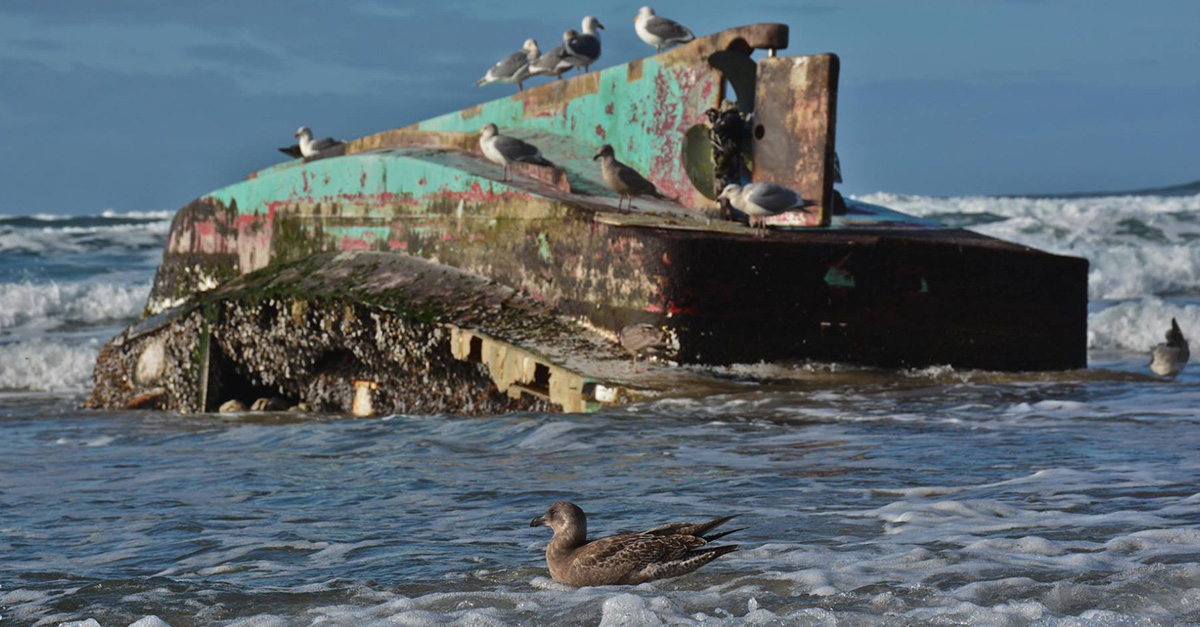After six years lost at sea following the devastating 2011 Japanese tsunami, a ghost ship washed ashore in Oregon, teeming with life, reported the Daily Mail.
Videos by Rare
The fishing boat is marked with Japanese lettering and was found within the Arcadia Beach State Recreation Site.
The only passengers on the boat were a valuable delicacy: it was overrun with gooseneck barnacles.
After the tsunami, experts believe the boat was probably trapped by the Kuroshio Current that runs along the east coast of Japan. Professor David Tappin of the British Geological Survey – who was one of the first non-Japanese experts to analyze the damage to Japan in the wake of the tsunami – described a possible course for the ship’s journey.
“The material that was flooded out was picked up by the Kuroshio Current, which swept it eastwards,” he said. “I guess the first landfall was in Hawaii, and I think that took something like six to eight months. And then subsequently, after about a year or 14 months, it started to be washed up on the northwest coast of the U.S.”
Tappin said the boat likely got caught in the Great Pacific garbage patch, an area of the ocean believed to be at least the size of Texas where swirling sea currents called gyres have trapped trash and debris.
“Some material went onshore, but a lot of it was caught up in this gyre which circulates clockwise, and it’s probably still there being degraded,” Tappin said. “Every so often I suppose there’ll be a bit which will be dragged out and washed up somewhere on the coastline, most likely along the western U.S.”
RELATED: The legendary Christmas Tree Ship is resurrected thanks to Coast Guard
Other scientists also weighed on the ship’s amazing journey from Japan to the Oregonian coast.
Dr. Andrew Yool and Professors Adrian New and Richard Lampitt said the currents in the Great Pacific garbage patch and other gyres could explain how the ship took more than a half-decade to make its journey.
“It could also have been transferred from the North Pacific Gyre to the Alaskan Gyre, which circulates south of Alaska,” they wrote. “Again, it could have circled this more than once.”
Tiffany Boothe of Oregon’s Seaside Aquarium, who discovered the wreck, said a storm was most likely responsible for shaking the ship free of the swirling currents — somewhat ironic, given that a storm set it out to sea in the first place.
“Large storms, combined with strong westerly winds, will sometimes dislodge the debris and trash gathered in gyre,” Boothe said. “When this happens, there is a potential to get tsunami debris. However, most of what washes in is trash from all over that has accumulated in the gyre.”
Officials in Oregon removed the boat from the beach where it washed up early in December and will probably scrap it. As for what will be done with the delicious and lucrative gooseneck barnacles that were aboard, there have been no reports.



